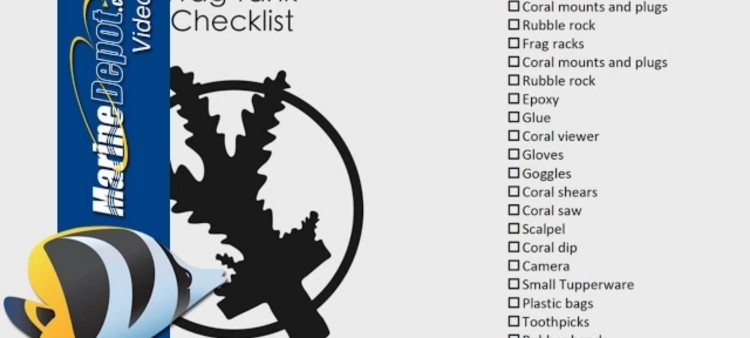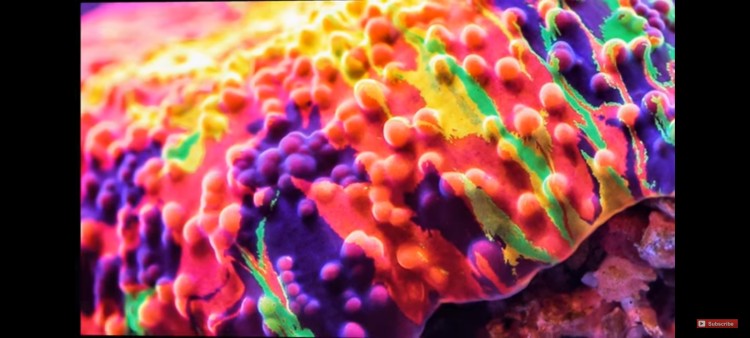How to Frag Corals and Build a Frag Tank
- Mar 27, 2022
- Anshika Mishra
- 394 0 0

So you have mastered the art of growing coral to such a degree that your tank has become cluttered, and your colonies have reached the water surface. Well, what's next?
Building a frag tank is a fun and rewarding step to keep evolving in the hobby. Growing and collecting corals to sell or share with your friends is a great way to share your love of reef keeping. Plus, seeing your corals grow in another hobbyist tank is very satisfying.
Read on to find out the best way to build a sustainable frag system and some of the most popular tips to make fragging easy and fun.
Choosing the Right Frag Tank
When shopping for a frag tank, ideally, you want something shallow. They are easy to clean and offer better light to grow corals.
Plus, shallow tanks are more accessible, so you can add or remove frags, place a frag rack, and perform tank maintenance quite easily.
Like any other reef aquarium, proper water flow is required for a successful frag system. However, you don't need to buy anything too fancy, and standard powerheads produce sufficient flow for frags to thrive.
The same aquarium rule we follow applies to the frag tank, i.e., 3-5 watts per gallon is required to heat an aquarium properly. So, for example, a 50-gallon tank should have a 150-250 watt heater.
Most frag systems are less than 16-inches deep and are usually used as a temporary holding tank. So, you don't need high power lights to be successful in growing and keeping the coral. Instead, a simple T-5 or LED strip light will do fine.
Live rock and sand are typically not in a frag system because it helps keep the tank clean. However, your hands are constantly going in and out of the tank, and newly fragmented corals will release toxins. Therefore, a more frequent water change schedule is recommended.
Performing a 50-55% weekly water change and running fresh activated carbon will help the coral thrive. Since there are no fish in the frag system, you most likely will have a low organic waste level. So, running a protein skimmer is optional.
Of course, adding a protein skimmer will help keep the water clean, but it isn't required.
The Guiding List
To make the process easy for you, here is the compiled list of not-so-obvious items that you still need to pick up:
- Frag racks
- Coral mounts and plugs
- Rubble rock
- Frag racks
- Epoxy
- Glue
- Coral viewer
- Gloves
- Goggles
- Coral Shears
- Coral Saw
- Scalpel
- Coral Dip
- Camera
- Small Tupperware
- Plastic Bags
- Toothpicks
- Rubber bands
- Thread or fine string
Fragging Coral
Cutting coral is done in a few ways, considering which type you are fragging. First, SPS corals are cut using sharp spears, similar to what you might use in a garden.
Cutting a coral at the base of the new growth is the best way to get a clean cut and a nice frag.
The Technique used to frag LPS corals will vary depending upon the particular species' growth. Branching LPS can be fragged like SPS, using shears to cut away branches or new development.
Colonial types of LPS like the Acans can be foraged using a small band saw. However, cut around the mouth, not through the centre as you would do for an anemone.
Soft corals and anemones are trickier to deal with since they lack rigid skeletons, making handling them much more challenging. Therefore, a clean cut is achieved usually by cutting through a scalpel razor or sharp pair of scissors. Where to prune depends on how a particular coral grows.
Hobbyists have gotten creative when it comes to mounting corals, especially in the case of where glues cannot be used, like with Mushrooms and Anemones. This is where thread and rubber bands come in handy.
Right Glue
Reef Glue is the best choice when dealing with SPS and many LPS corals. This glue is also popular for holding polyps like Zoas to a frag plug.
It is best to apply a small amount of reef glue to a dry frag plug out of the water, let it sit just long enough for the coral to put in place and then place it back in the frag tank.
It does not work well when applied underwater and gets messy if you use too much.
The main thing to remember when fragging and mounting corals are to have a plan, have all the tools and supplies you have within reach and try to keep your coral handling out of the water to the minimum.
Collecting and trading the coral frags is one of the most fun parts of the aquarium hobby. For many of us, discovering a rare coral to stumble across that hard to find frag adds another level of interest in the hobby.
Suppose you have questions about building a frag tank or need help fragging a coral. Comment down below, and we will answer your every query.







About author